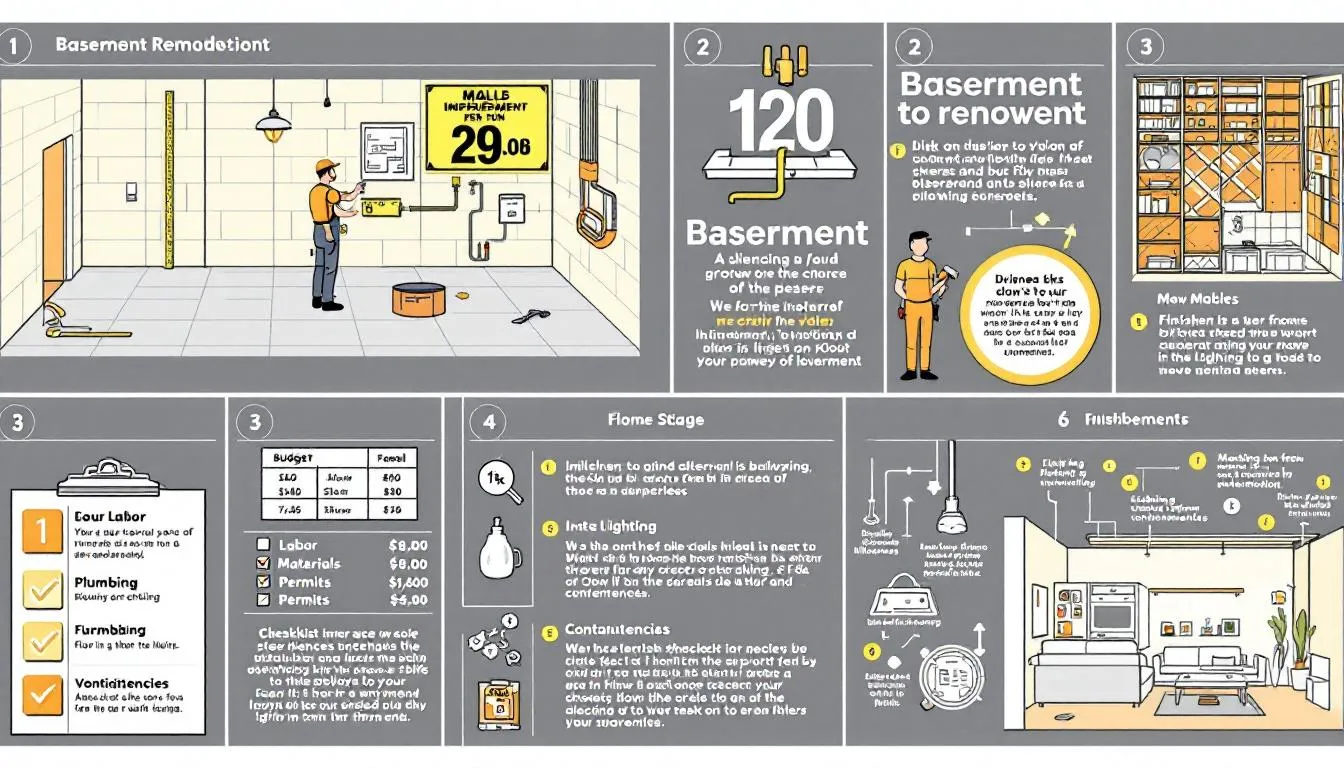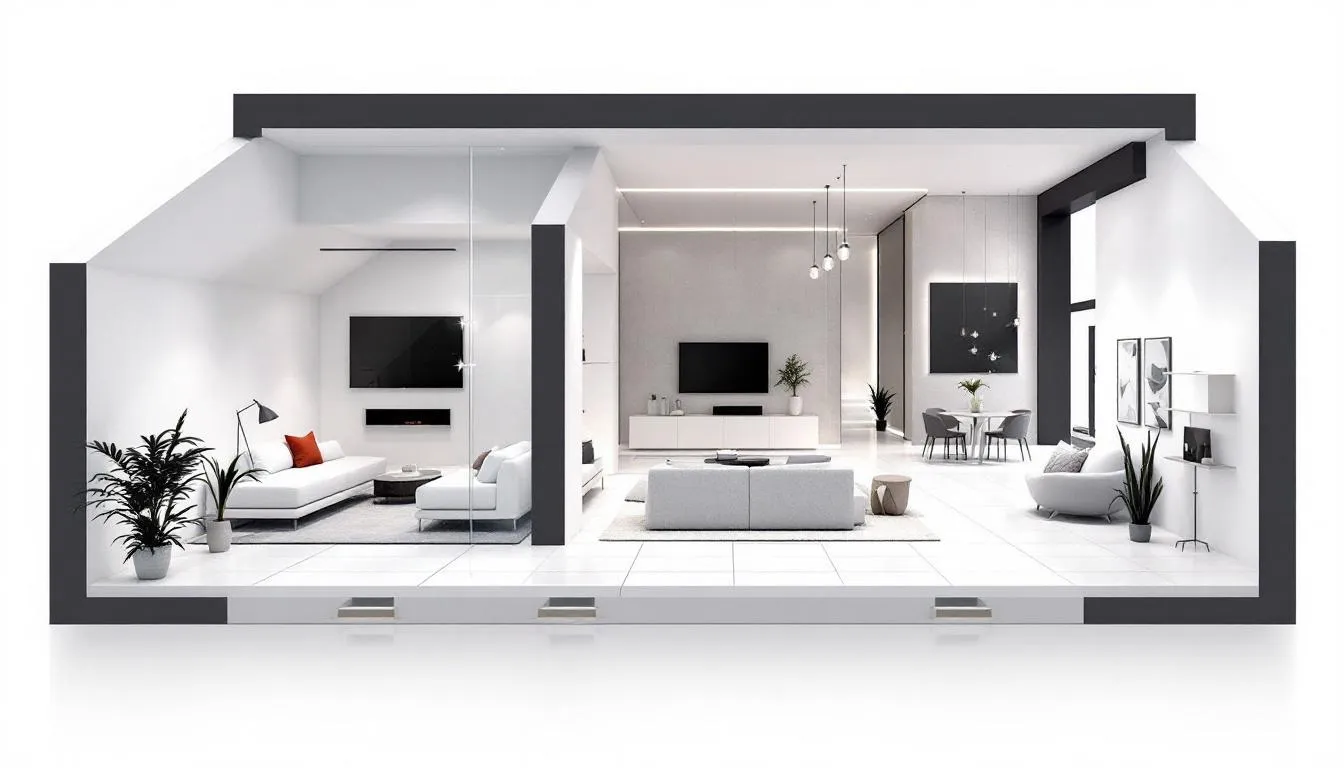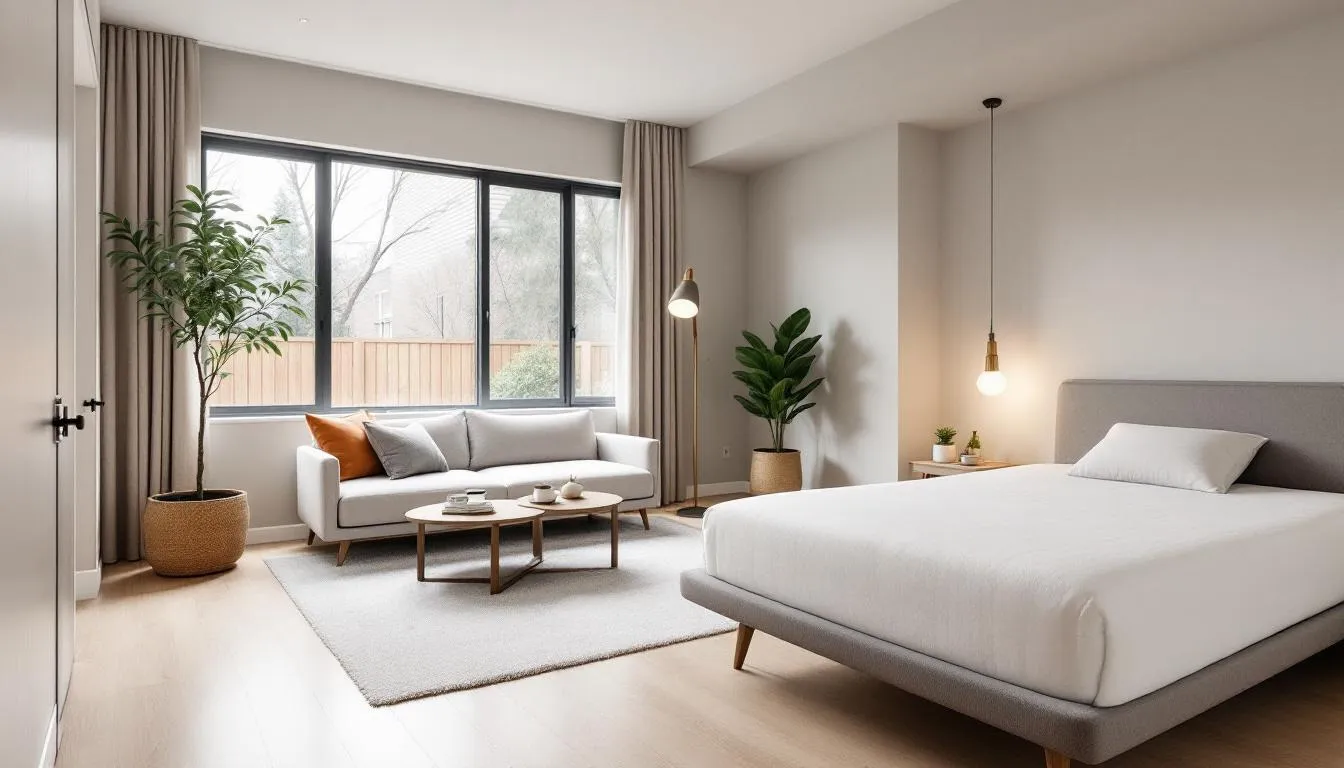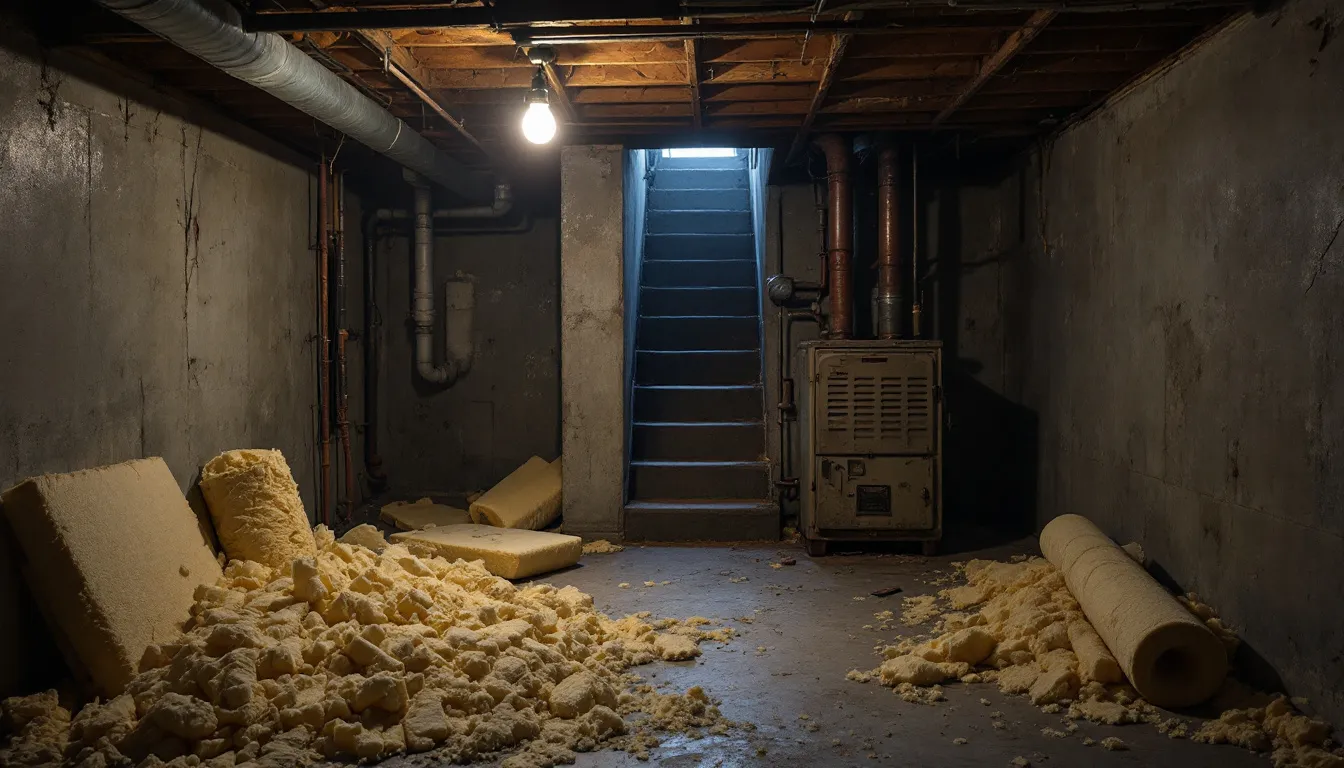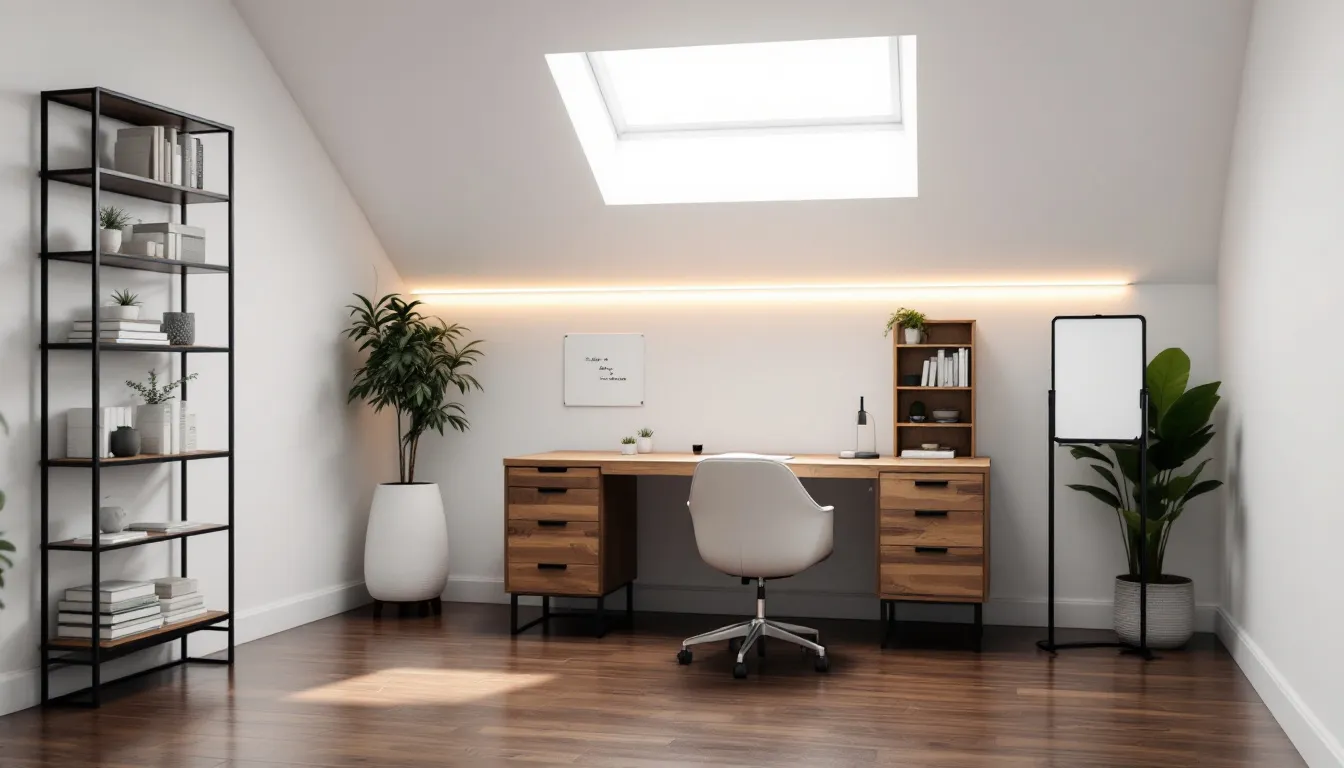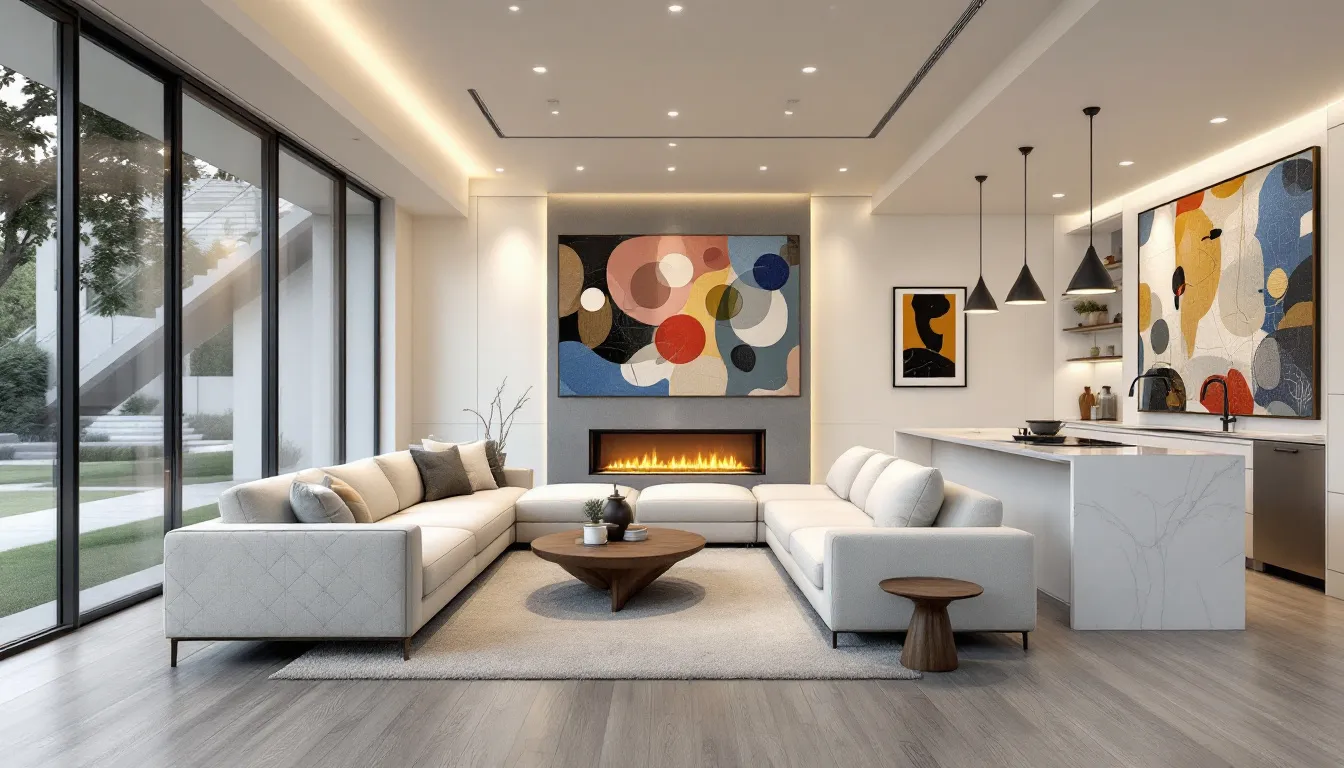Lighting Solutions to Brighten Up Your Basement
Is your basement dark and uninviting? Discover lighting solutions to brighten up your basement and create a welcoming space. This article covers practical tips and options to transform your basement with better lighting.
Key Takeaways
- Maximize natural light in your basement using egress windows or sun tunnels to create a brighter environment.
- Incorporate a mix of lighting options like recessed lighting, wall sconces, and floor lamps to ensure a well-lit and functional space.
- Consider smart lighting solutions and layered lighting techniques to enhance ambiance, safety, and versatility in your basement.
Maximize Natural Light
Natural light can transform your basement from a gloomy cave into a bright and inviting space. One of the most effective ways to introduce natural light is by installing an egress window. Not only do these windows provide a safety exit, but they also allow a significant amount of natural light to flood into your basement, meeting building codes for bedrooms. If egress windows aren’t an option, consider light wells. These excavated outdoor spaces can direct sunlight into your basement windows, creating a brighter and more welcoming atmosphere.
Another innovative solution is the use of sun tunnels. These reflective tubes capture sunlight through a dome and channel it into your basement, providing a steady stream of natural light throughout the day. Additionally, an open floor plan and strategic landscaping around your basement windows can enhance the flow of natural lighting, making your basement feel more sunlight open and inviting.
Adjustable window treatments can help manage the amount of light entering the space, allowing you to create the perfect balance of brightness and a space feel.
Recessed Lighting for General Illumination
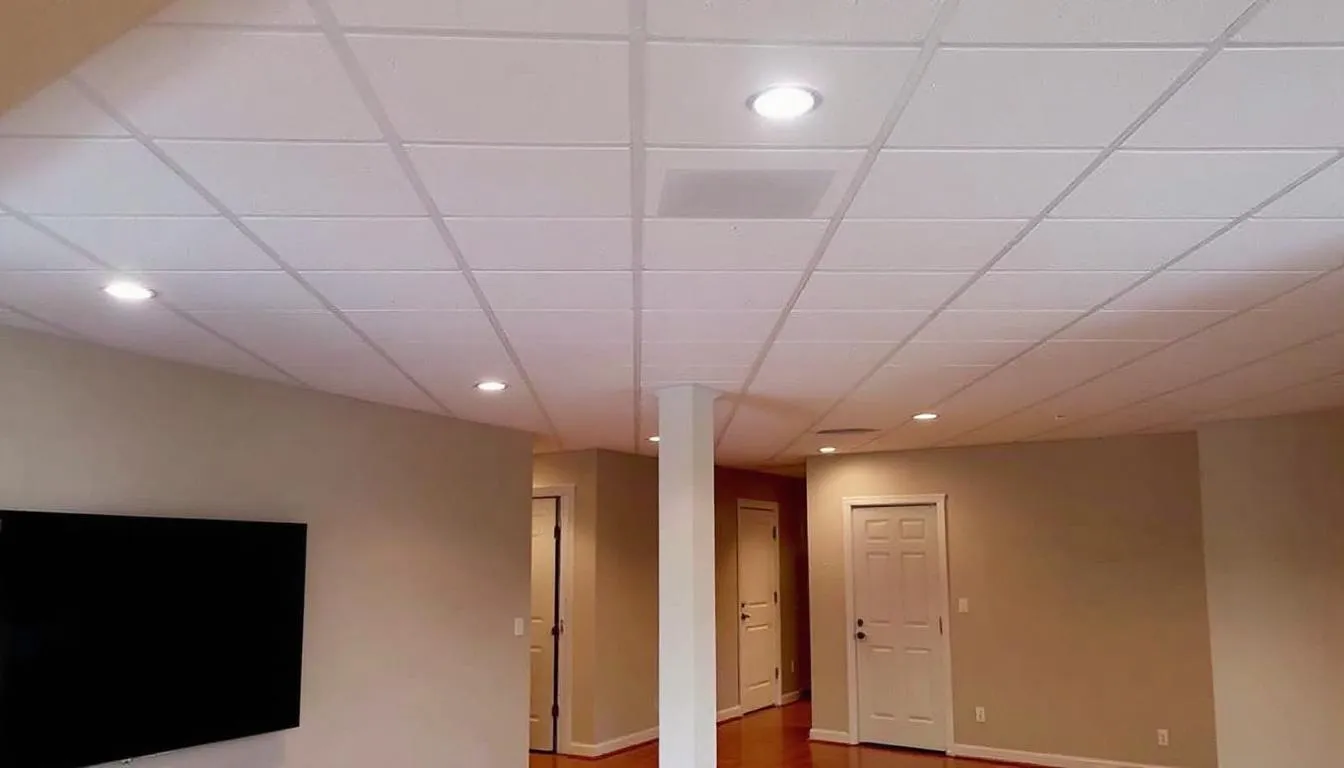
When it comes to providing general illumination in basements, recessed lighting, also known as can lights, is a popular choice. These lights are ideal for basements with low ceilings as they fit seamlessly into the ceiling, saving valuable space. Recessed lights offer focused, shadow-free illumination, making your basement feel more open and inviting.
Achieving balanced lighting requires careful planning of your recessed lights’ layout. Consider the room size and furniture placement for the right lighting and enough light, while also adding a little light for even illumination.
LED bulbs in recessed lights enhance brightness and reduce electricity costs, making them practical and energy-efficient. For safety and code compliance, hiring a qualified electrician is recommended for installation.
Use Track Lighting for Flexibility
Track lighting is another excellent option for basement lighting, offering remarkable flexibility and functionality. One of the key benefits of track lighting is its adjustable fixtures, allowing you to direct light wherever it’s needed most. This flexibility is particularly useful when rearranging your basement, as you can easily redirect the light without changing fixtures.
Track lighting is also perfect for highlighting specific areas or features in your basement, such as artwork or highlight architectural features. Its versatility means it can complement various styles in basement decor, making it a fitting choice for any theme. Plus, track lighting is easy to install and doesn’t occupy valuable floor or wall space.
Wall Sconces for Stylish Accent Lighting

Wall sconces are a stylish and practical way to add accent lighting to your basement. They offer several benefits:
- Create visual interest by framing artwork or architectural features
- Draw attention to specific areas in your space
- Help avoid clutter in narrow spaces since they are mounted on walls
- Provide light without taking up floor space
Choosing sconces with colored glass or unique designs can add a decorative element, complementing the overall style of your basement. Wall sconces can be installed at varying heights to achieve different lighting effects, making them versatile for decorating any basement space.
By creating layered lighting effects, wall sconces enhance both style and functionality, making your basement more inviting.
Floor and Table Lamps for Task Lighting
Task lighting supports activities like reading, working, or crafting. Examples include:
- Floor lamps that provide focused illumination where needed.
- Table lamps that offer targeted light for specific tasks.
- Adjustable floor lamps that create cozy reading nooks, eliminating shadows and enhancing visibility.
Table lamps ensure adequate lighting for desk work, enhancing the basement’s functionality. Though they require plugging in and aren’t controlled by standard switches unless outlets are switched, their decorative potential can enhance the overall decor. Proper positioning prevents glare and ensures optimal brightness.
Pendant Lights for Focused Illumination
Pendant lights provide focused illumination for areas like a dining table or bar counters, combining style and functionality. Chandeliers and vintage-style pendant lighting add elegance and brightness, serving as striking focal points in the decor.
Adjustable pendant lights, modifiable in height, suit various ceiling levels and tasks. They draw attention to architectural features and enhance overall brightness, transforming your basement into a stylish, well-lit living space with overhead fixtures and ceiling lights.
LED Strip Lighting for Ambient Effects
LED strip lighting is an energy-efficient way to add ambient lighting to your basement. These lights can be customized in brightness, speed, and delay, allowing you to create the perfect ambiance for various activities. Installation is straightforward and often requires no professional assistance, making it an accessible option for homeowners.
LED strip lighting can be cut to fit specific areas, providing versatile installation on staircases or under cabinets. They are also ideal for home cinemas, offering subtle illumination that enhances the viewing experience without distraction. By contributing to lower electricity bills, LED strip lighting is a cost-effective and stylish choice for your basement.
Reflective Surfaces to Enhance Brightness
Reflective surfaces significantly enhance brightness by distributing light evenly. Examples include:
- Mirrors
- Glass
- Metallic surfaces These surfaces improve overall illumination by reflecting light. For instance, a mirror placed opposite a light source can double perceived brightness, making the basement feel more open and inviting. Additionally, these surfaces can reflect light, further enhancing the brightness of the space.
To create a brighter, more welcoming finished basement remodels:
- Use light-colored walls and finishes, like soft whites or light grays, which reflect more light.
- Choose glossy or semi-gloss paint finishes to enhance reflection, as matte finishes are less effective.
- Incorporate a fresh coat of cool white light-toned wood or vinyl planks.
Smart Lighting Solutions
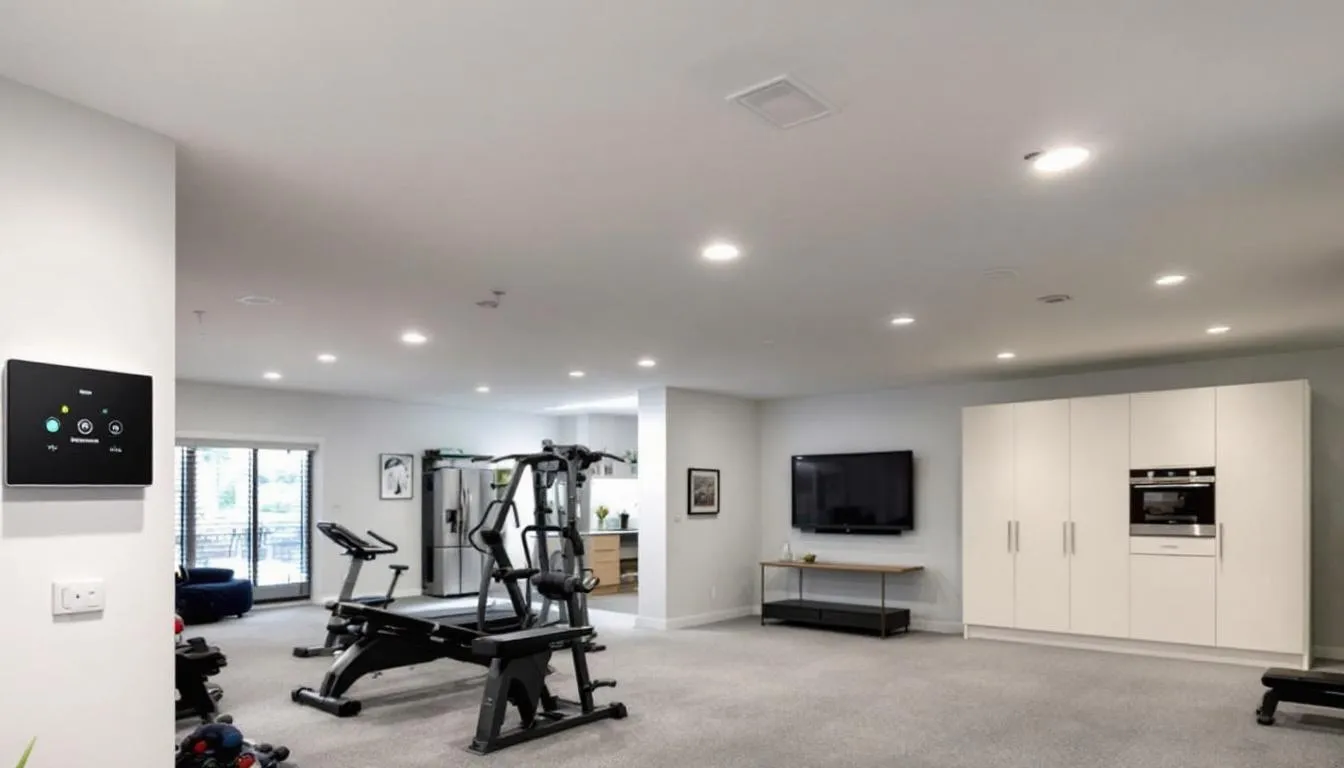
Smart lighting solutions offer advanced functionalities to enhance your basement lighting. Features like remote control, scheduling, and adjustable color temperatures create the desired atmosphere for various activities. Dimmer switches with recessed lights enable adjustable brightness and energy savings, enhancing the ambiance throughout the day.
Smart home devices offer various benefits:
- Smart bulbs and switches are easy to install, offering quick upgrades without extensive renovation.
- Motion sensors automate lights for improved safety and convenience.
- Smart plugs enhance functionality by enabling lamp control with a wall switch, making task lighting more flexible.
Safety Considerations in Basement Lighting
Safety is paramount in basement lighting, especially around stairways and dark areas. Well-lit stairways enhance safety by clearly marking steps and preventing accidents. Motion sensor lights further enhance safety by automatically illuminating spaces upon entry.
LED strips offer soft light that enhances visibility and reduces fall risks, ideal for staircases. Lighting fixtures in basements should be rated for damp or wet conditions to avoid electrical hazards, and proper installation ensures compliance with local building codes.
Choosing the Right Light Bulbs
Selecting the right light bulbs is crucial for achieving the desired ambiance and energy efficiency. Consider brightness, color temperature, and energy efficiency. For basement living spaces, recommended lumens per fixture typically range from 800 to 1,100 lumens.
LED bulbs, ideal for track and task lighting, offer energy efficiency, longevity, and low maintenance. Smart lighting systems enable energy-saving timers, optimizing electricity usage for convenience and cost savings. Artificial light from a bulb can enhance the overall ambiance of any space, showcasing various lighting types, including warm white options and dimmable lights, as well as artificial lighting.
Incorporate Multiple Light Sources
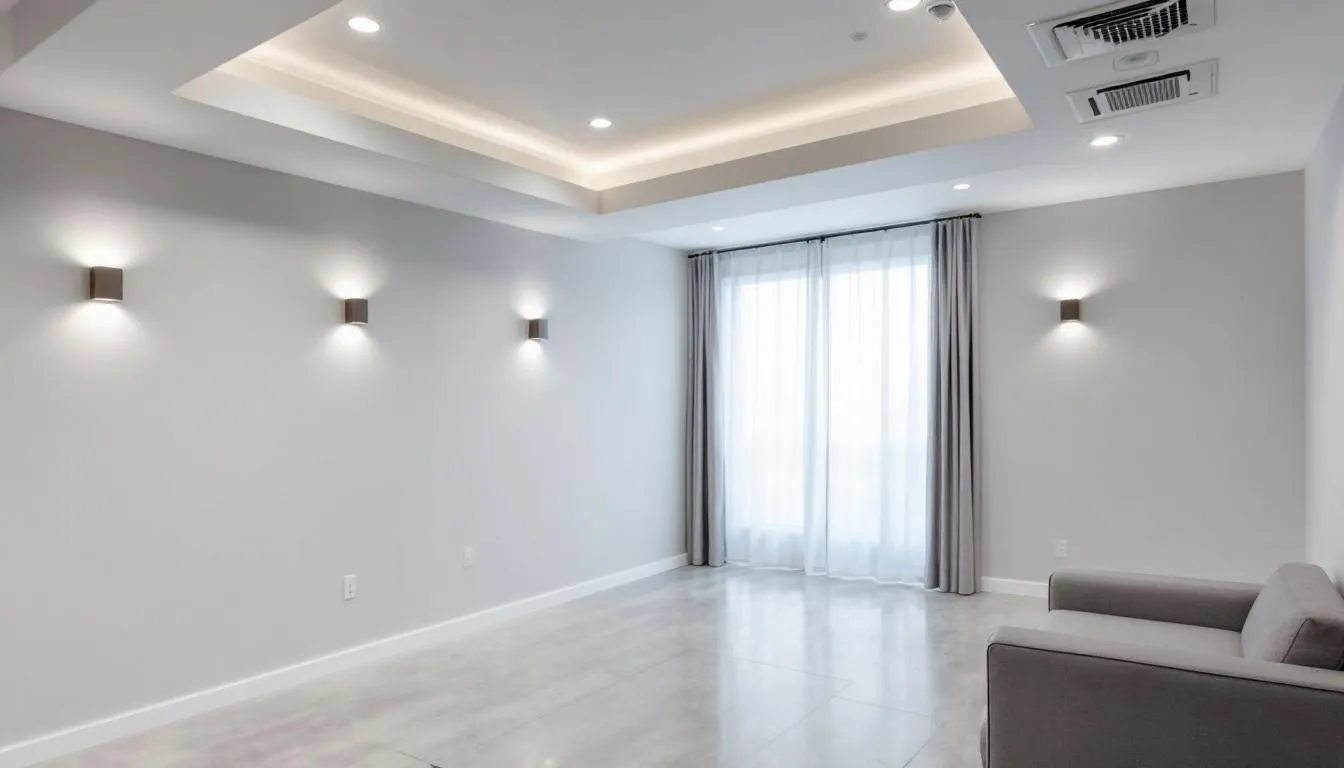
Ensuring all areas of your well lit basement are well-illuminated requires using multiple types of light sources, including basement lights that can serve double duty. Layering techniques, like combining recessed lights with floor lamps and tried and true methods, enhance versatility and prevent shadows in dark corners.
Different basement areas may require specific lighting strategies, like softer lighting for play areas or brighter lighting for workspaces. Combining ambient, task, and accent lighting creates a visually appealing, well-lit atmosphere, enhancing functionality and invitingness.
Creative Light Fixtures for Unique Decor
Creative light fixtures can transform your basement into a lively, inviting space. Options include:
- Pendant lights
- Chandeliers
- Unique floor lamps These add elegance and personality. Additionally, recessed lighting creates a contemporary look, making the basement feel more open and inviting.
Unique lighting options enhance the overall decor, providing ample lighting and increasing the basement’s functionality and appeal. Choosing creative fixtures that reflect your style can make your basement a unique and welcoming part of your home.
Summary
In summary, transforming your basement into a bright and inviting space is achievable with the right lighting solutions. From maximizing natural light to incorporating smart lighting and creative fixtures, each approach plays a crucial role in enhancing the ambiance and functionality of your basement. By following these tips, you can create a well-lit, stylish, and safe living space that you’ll enjoy for years to come.
Ready to work with Basement Remodeling Long Island?
Let's connect! We’re here to help.
Send us a message and we’ll be in touch.
Or give us a call today at 646-801-1701
Agency Contact Form
More Marketing Tips, Tricks & Tools
